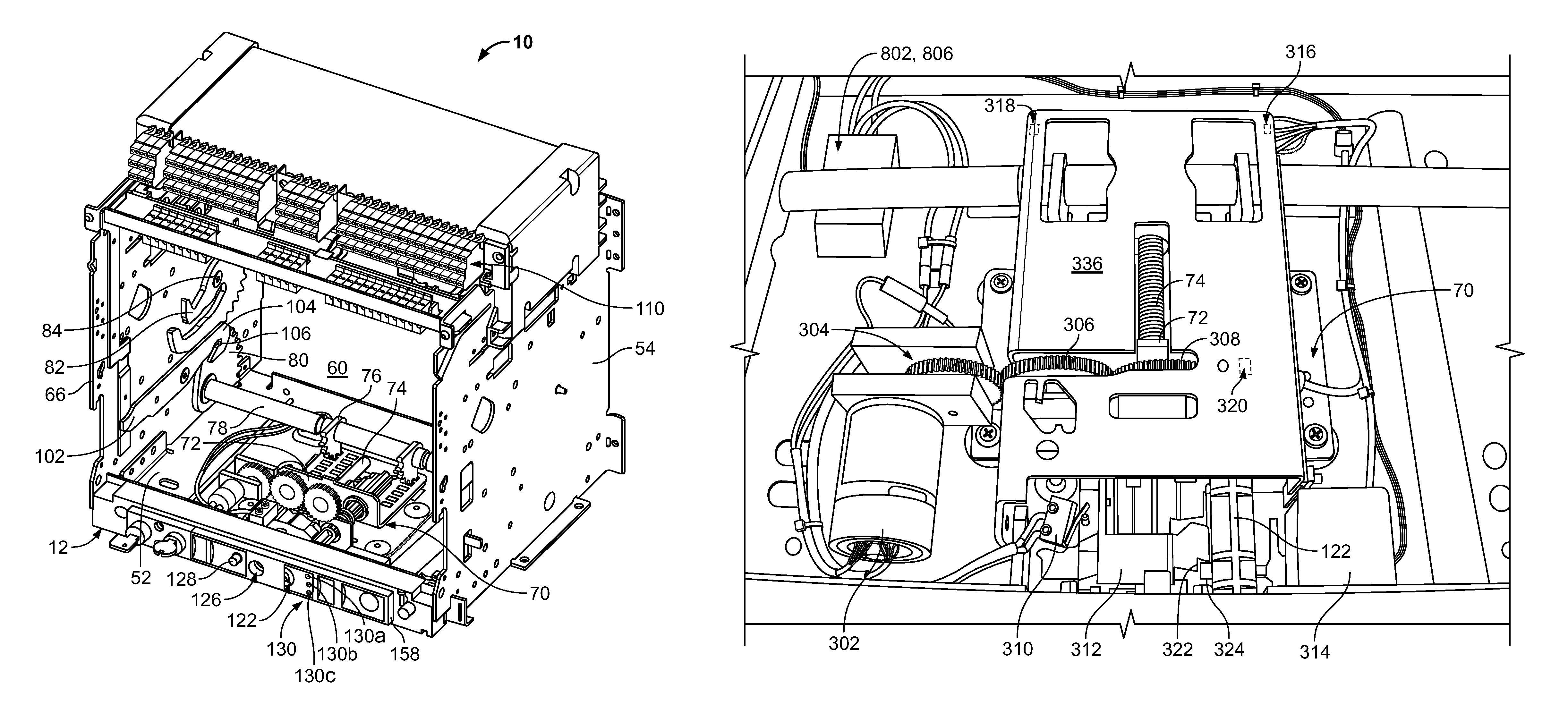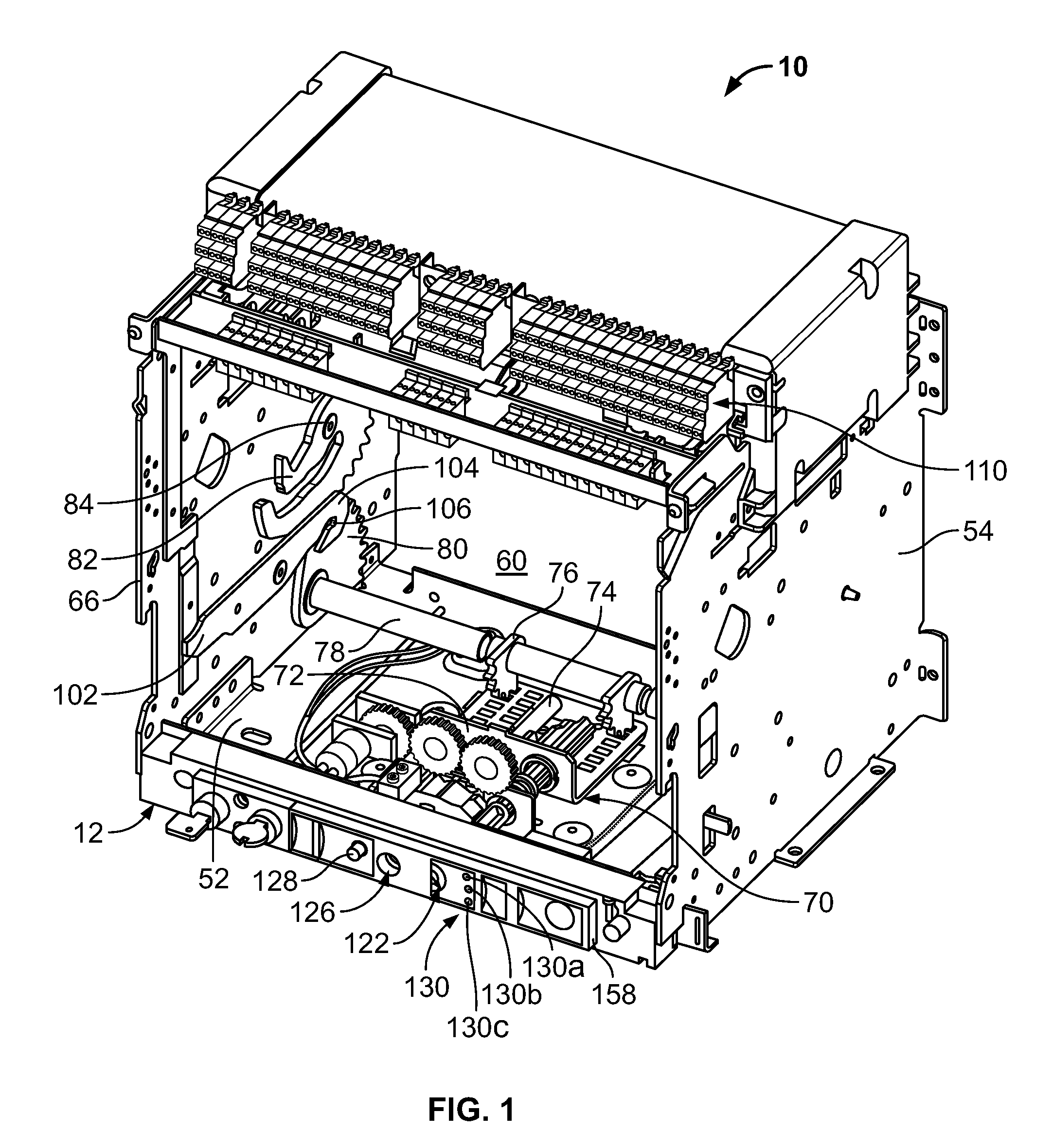Wireless remote racking mechanism
a technology of electrical switchgear and remote racking, which is applied in the direction of air-break switch, high-tension/heavy-dress switch, electrical apparatus, etc., can solve the problems of cumbersome protective gear, personal danger to the operator's safety, and the need for racking such high-capacity circuit breakers
- Summary
- Abstract
- Description
- Claims
- Application Information
AI Technical Summary
Benefits of technology
Problems solved by technology
Method used
Image
Examples
Embodiment Construction
[0029]FIG. 1 is a perspective view of a cradle 10 for use in electrical switchgear equipment (or switchgear / board). The switchgear / board can have a high, medium, or low voltage rating as defined by the American National Standards Institute (ANSI) or can refer to a “switchboard” as defined in Underwriters Laboratory Standard UL891. The terms switchgear and switchboard are referred to interchangeably herein and refer to the same device. The cradle 10 accepts a circuit breaker 14 (shown in FIGS. 2A-2D) inside a frame 12 in the form of an open housing. The open housing includes a base plate 52 and two opposite side walls 54, 56 confining a front opening for insertion or removal of the plug-in circuit breaker 14. The side walls 54, 56 are provided with a pair of parallel draw-in slides 114 (shown in FIG. 4) operable to support and guide the circuit breaker 14 as it is being racked into and out of the cradle 10. The draw-in slides 114 can be seen in FIG. 4 but have been removed in FIG. 1,...
PUM
 Login to View More
Login to View More Abstract
Description
Claims
Application Information
 Login to View More
Login to View More - R&D
- Intellectual Property
- Life Sciences
- Materials
- Tech Scout
- Unparalleled Data Quality
- Higher Quality Content
- 60% Fewer Hallucinations
Browse by: Latest US Patents, China's latest patents, Technical Efficacy Thesaurus, Application Domain, Technology Topic, Popular Technical Reports.
© 2025 PatSnap. All rights reserved.Legal|Privacy policy|Modern Slavery Act Transparency Statement|Sitemap|About US| Contact US: help@patsnap.com



